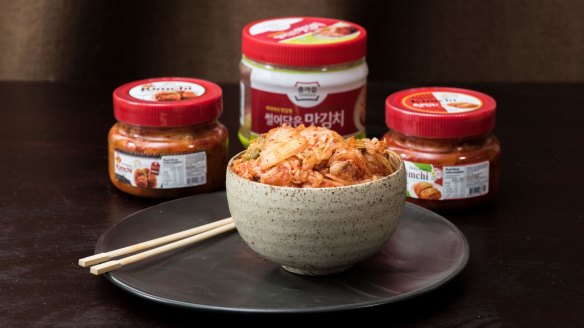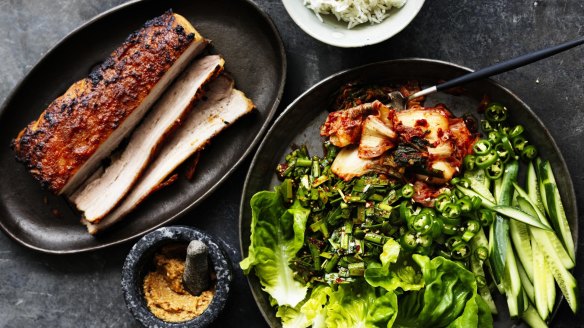Kimchi: Everything you need to know

What is it?
Korea's national dish of cabbage, garlic and sun-dried chilli fermented with fish sauce is food with almost unfathomable cultural resonance. It's traditionally made at the start of winter. The vegetables are chopped, mixed and placed in hand-made ceramic fermenting pots then buried in the earth for several months to ferment and mature. Commercial kimchi is made in large batches, fermented in stainless steel for several weeks and packed into plastic jars.

Why do we love it?
Lactic acid fermentation transforms those ingredients into a hot and spicy, fresh yet funky, salty but refreshing condiment where you can still taste all the ingredients but it has its own unique, tangy vibrance.
That same fermentation process fills kimchi with billions of probiotic bacteria, which makes it one of the most popular gut-health foods around.
Who uses it?
Korean-born Sydney chef Sammy Jeon from Diana in Potts Point says his mother grew and sun-dried the traditional gochugaru chillies to flavour the 500 cabbages she chopped up each year to make kimchi.
"For a Korean, a meal is not complete without kimchi. If I eat at a Western restaurant, I will go home and eat kimchi. Otherwise, I won't sleep."
How do you use it?
- Take a leaf out of the Korean kitchen and serve as a tangy condiment to meat and chicken dishes.
- Put kimchi on a bowl of rice for a kick of heat and garlic.
- Fold a few tablespoons of kimchi through an omelette.
- Mix chopped kimchi and spring onions through pancake batter and serve with gochujang (Korean chilli paste) dipping sauce.
- Mix chopped kimchi with pork mince, fold into dumpling wrappers and steam then pan-fry.
- Add kimchi to a chicken or beef braise, where the fish sauce will add a rich umami note.
- Los Angeles chef Roy Choi famously filled quesadillas with buttered kimchi blended with Monterey Jack (cow's milk cheese) and cheddar at his Korean-Mexican taco truck Kogi – you can do the same (Google the recipe).
- Add kimchi to a cheese toastie.
- 20 more ways with kimchi
Where do you get it?
Asian grocers and supermarkets and some health food stores stock Korean brands such as Jongga. Some labels are written in Korean but look for the words "Imported direct from Korea".
We are lucky to have artisanal kimchi made locally by Korean chefs: try Mumchan in Laverton and Melbourne's CBD and in Sydney check out stockists for Moon Mart Asian Pantry.
